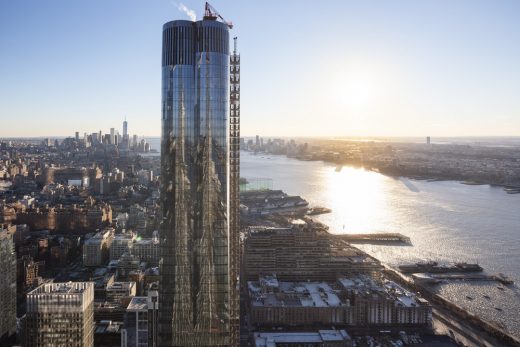Slum Housing, Architecture Context, Article, Architectural Design Ethos
A Challenge to our Profession : Building Discussion
Slum Housing Discussion by Douglas Klahr
16 Mar 2011
Article by Douglas Klahr that appears in trans, the half-yearly journal published by the ETH in Zurich – issue 18 devoted to architecture and politics.
Douglas Klahr issues an indictment of and a challenge to our profession.
He do this in the interest of promoting as wide a discourse as possible.
Douglas Klahr, Ph.D. is Assistant Professor at the
School of Architecture, University of Texas at Arlington, USA
A Challenge to our Profession
BECOMING BUILDERS AGAIN IN AN AGE OF GLOBAL CRISIS
Douglas Klahr
The standard responses within architectural pedagogy and practice to the long-standing slum housing problem in the developing world are challenged in this indictment of the profession regarding its failure to respond in commensurate magnitude, rapidity and commitment to the crisis. The creation of a new model of pedagogy and practice – the Participatory Housing Practice – is proposed and encouraged.
A new type of social responsibility that is as raw and gritty as the global crisis of one billion slum dwellers must become a new ethos in the pedagogy and practice of architecture. These individuals – which do not include those living in merely “substandard” housing – account for 14.7% of our planet’s population, or one in every 6.8 persons.1 Current programs to address this almost incomprehensible crisis are too limited in scope, too self-reflective as “design” exercises, too leisured regarding time frame, and totally incommensurate regarding materials and scope to address the extremity of dire conditions in developing-world slums. This new ethos of social responsibility needs to match the crisis in its unrelenting intensity, meaning that it is exquisitely priority-sensitive and therefore defined by two simple criteria: urgency and magnitude.
This essay examines how social responsibility can be reintroduced into architecture, not as a philosophical matter to remain a cerebral discourse internal within the profession, but as a means toward finding pragmatic solutions to the global housing crisis. This criterion is essential, for it does two things. First, it does not permit students and practitioners to retreat comfortably to the familiar territory of an American/European “affordable” housing design ethos that, although perhaps noble in intention, has utterly failed to address the vast scale and exponentially growing magnitude of the crisis. Second, reintroducing social responsibility as a means towards accomplishing a specific goal places this investigation firmly within the post-ideological era that slowly is beginning to emerge. In this new age, a priority is placed upon continually evolving networks of individuals and nimble, lean organizations working together to find – and more important, implement – pragmatic solutions.
The question is not whether some architecture schools and some architects produce “affordable” housing. This they do, but the current pedagogy and practice suffer from a major flaw. These still are primarily projects that focus upon the creative aspect of the practice, instead of focusing upon pragmatic solutions that might not be centered about reaffirming an architect’s creative identity. Unfortunately, this mindset is a result of our pedagogy, which may produce well-intentioned individuals but spectacularly fails to train them to respond to this global housing crisis. To make such statements naturally is subversive to the entire notion of what it means today to be an architect, but that is the point of this essay. In a world careening from a long-standing global housing crisis – let alone the loss of dwellings due to increasing climate disasters – this essay is a wake-up call, metaphorically shaking this tone-deaf profession by the shoulders, if not shouting at it in a voice thick with frustration.
When one raises the issue of developing-world slum housing in conversation within architectural circles, the response often is almost antediluvian in its parochialism: “You are talking about building, not Architecture.” When one then prods further to inquire what group of professionals should address the crisis, the response often is, “Well, some problems in the world simply are intractable.” This attitude – and the state of the profession – is akin to what would occur if the most widespread epidemics were ignored by the medical profession. It is as though development of the polio vaccine had remained a polite, effete, dinner-party topic of conversation among health professionals for decades and never reached massive, global production.
Cries will be raised within the profession that we are not delivering a product such as a vaccine, but rather we are providing a service to our clients. Perhaps the time has come for us to return to our long-lost identities as builders. There is no other way, for whatever outposts of social responsibility that remain within architectural practice have proven ineffectual, and the profession has remained numb to responding in appropriate dimensions and rapidity to the crisis. The era of well-intentioned yet small-scale interventions must end, for their seductively reassuring, photo-op nature has lulled our profession into complacency.
The comparison between professions – medicine and architecture – is deliberate, not only due to their similarities in terms of educational and licensing requirements, but because the Urquellen of both arose from the most basic notions of human survival: providing shelter and treating disease. Moreover, as the United Nations’ five indicators of slum housing illustrate, the two professions are intertwined in a contemporary manner, for deplorable housing conditions and diseases of epidemic proportions are linked. Epidemiologists, sanitation experts, urban planners, and sociologists all have been involved in various slum upgrading projects in the developing world, but with rare exceptions, architects have been absent.
What is needed, therefore, is not a feel-good, add-on studio or two of participatory design, but rather an entirely new pedagogy parallel to the existing one that will train experts – not “designers” – to respond to this crisis. In the few instances where architects have produced viable housing for developing-world slums, the design process has been intensely participatory, involving the slum residents in every stage. This new type of pedagogy and practice would place top priority on a design ethos that no longer values novelty or idiosyncrasy, and would establish a new paradigm focused upon resolving the slum housing crisis on a scale and pace that are commensurate with the magnitude and exponential growth of the problem.
Over the past 150 years, the pedagogy and practice of architecture has embarked upon a journey of separating and isolating itself from the simple practice of building. In his study Reconstructing Architecture for the Twenty-First Century, Anthony Jackson pinpointed the bête noir of modern pedagogy and practice: the fact that even when it was disguised within the supposed functionalism of Modernism, aesthetics was still what distinguished architecture from mere building. He writes:
«Possibly the advocates of a university-type education thought that it would raise architecture to the level of an intellectual discipline. On the contrary, the theory and practice that resulted confirmed that architecture was still to be pursued in terms of styles that did not encourage rational discourse. The replacement of the École des Beaux-Arts by the Bauhaus as an international model in the midtwentieth century had significant pedagogic and stylistic consequences, but only accentuated the underlying contradictions of an architectural training…The search for principles through research appeared to do away with outdated prescriptions. In practice, however, it only replaced one dogma with another, because the method was tied to stylistic preferences. »2
Moreover, something occurred within architectural pedagogy – and therefore architectural practice – that has profoundly isolated the profession from the rest of the world over the past eighty years. Once again, Anthony Jackson is worth quoting at some length:
«Aesthetic biases that had been largely explicit under the Beaux-Arts system now became concealed and implicit. Instead of being told that the Modern style represented the correct image of mid-twentiethcentury architecture, and having its principles and forms explained to them, students had to acquire this understanding through a series of exercises whose goals were largely prejudged but unstated….The fall of the Modern style changed the outward result but left the method intact. Students are still required to find their way through a series of exercises that invite rational thought while subverting it by the stylistic demands of the day. This result is achieved through a sort of Socratic dialectic reinforced by a system of punishments and rewards.»3
Jackson has identified what makes our current pedagogy so supremely illsuited to train individuals to respond to the global housing crisis: it strives to intellectualize the profession through a deliberately inscrutable form of instruction that masquerades as rational thought while often being little more than a smokescreen for instructors restricting students to delivering results that satisfy their preset aesthetic criteria. The true value of this quixotic method needs to be challenged, for this manner of education often is needlessly frustrating to a student. It seems as though we are afraid of clarity in studio instruction, for that somehow might detract from the intellectual aura and pretensions of our profession, and we dare not question this method to any deep extent. The result is that we have become a profession that is stunningly irrelevant to the vast majority of humanity, involved in “designing” only approximately two percent of what is constructed on earth. This profound disconnect, which began in the nineteenth century, was sealed when a Modernist agenda replaced a Beaux-Arts education. Adrian Forty pinpointed this seismic shift in his study, Words and Buildings: A Vocabulary of Modern Architecture. He wrote:
«In architecture, its effect was that what architects learnt in their training ceased to be ‘practice’, and became ‘principles’, in other words a wholly dematerialized and cerebral version of the art; and what students ‘produced’ from their training was not ‘architecture’ but drawings – commonly referred to as ‘designs’. The separation between architecture as a mental product – which was taught – and architecture as a practice engaged with the material world, now emerged for the first time as a visible fact of life…Now, with the separation of education from practice, ‘design’, rather than being a convenient way of conceptualizing a particular feature of architecture, came to be seen as a pure and self-contained activity within itself.»4
This matter of pedagogy and identity is a central reason why architecture has yet to respond in appropriate magnitude to the global slum housing crisis, which surpasses any other matter concerning what our profession loves to label the “built environment”. This no longer is sustainable, not in the obvious sense of building practices, but in a far deeper and more expansive reality: we no longer can avert our eyes from the one billion people living in global slums. Their collective impact on this planet will determine our future much more than any fussed-over, seductively-photographed LEED building that graces the self-congratulatory, glossy periodicals that unfortunately define our profession. It is time to put past us the trauma of Modernism’s spectacular, hubris-driven failure regarding mass housing, for a full generation has passed since the implosion of Pruitt-Igoe in St. Louis. Understandably, we retreated from tackling low-income housing into our inward world of design, but now it is time to venture forward again, not as “designers”, but rather as participatory housing practitioners.
So what would a pedagogy and practice based upon such an ethos look like? Simply put, it would be an approach based upon participatory design in which students from the first day of class would begin constructing their identities not as architects but as members of a team of epidemiologists, sanitation experts, urban planners, sociologists, and most importantly, a building’s users. The crucial point around which pivots the entire notion of a Participatory Housing Practice is the fact that because slum residents become an integral and vocal part of the design process, any notion of standardization becomes null and void.
What many policymakers and architects fail to realize is that akin to a conglomeration of microclimates, slums in the developing world are conglomerations of different social groups, each having specific housing needs and preferences that often differ from those of an adjacent group housed within the same sprawling slum. We have not trained architects to recognize the nuances and permutations that characterize what our profession has labeled “informal settlements”. For the dwellers of slums, however, these gradations and differentiations are as evident and important as those that exist for the dwellers within the “formal” built environment of a city.
How is it we remain unable to perceptively “read” and understand the urban environments of one-sixth of humanity? Our treatises may breathlessly expostulate upon new urban forms of informal settlements and aestheticize the reader’s vicarious experience via edgy photography. However, as usual, we remain detached from actually doing anything other than small, overly-celebrated interventions within the developing world’s slums. We are akin to doctors who cannot diagnose – much less treat – the most basic conditions encountered in human life, content to direct our discerning gaze at the image of a lesion from a safe distance away.
A critical question however arises on account of the variety of housing needs and preferences. If standardization and therefore mass production is antithetical to a true Participatory Housing Practice, how does one propose to tackle the global slum housing crisis? The answer is not in mass production, but rather in massive 4 Adrian Forty, Words and Buildings: A Vocabulary of Modern Architecture (New York: Thames & Hudson, 2000), 138. 82 Becoming Builders again amounts of small, nimble, transdisciplinary teams being assembled and deployed in slum areas.5
In an article titled “Deep Democracy: Urban Governmentality and the Horizon of Politics”, Arjun Appadurai documents how alliances between civic organizations are changing the way in which slum housing needs in Mumbai are being addressed. His observations about alliances formed in Mumbai provide clues about how transdisciplinary teams might work. He notes from the outset how the nature of such alliances differs not only from governmental and professional groups, but also from most NGOs:
«The coalition cultivates a highly transparent, non-hierarchical, antibureaucratic and anti-technocratic organizational style. A small clerical staff conscientiously serves the needs of the activists, and not vice-versa….Because everyday organizational life is filled with meetings with contractors, lawyers, state officials, politicians and between Alliance members, spatial fixity is not valued and the organization functions in and through mobility… The general impression is of a fast game of ice hockey, with players constantly tumbling in and out of the most active roles in response to shifting needs and game plans.»6
Appadurai’s words provide a glimpse of what a truly Participatory Housing Practice would be like: one in which the housing expert merely practices as part of a team, responding to the changing needs of the team with true mobility. The mobility of which Appadurai and I speak is true nimbleness of mind, not a simulacrum achieved through legions of computer programs and functionaries within a hothouse studio environment. The mental nimbleness of which I speak entails communicating not with your fellow architects, but rather with slum residents, using perhaps only pencils, pen and paper to offer them the one ability that your transdisciplinary teammates do not possess: translating needs and requirements into imagery. The mental nimbleness of which I speak revels in using the most basic and inexpensive materials, instead of following the siren song that murmurs “be advanced” by using cutting-edge technology and materials.
Indeed, we need to deeply challenge our profession’s notion of “innovation”, for this catch-all term seems to dictate what we celebrate – and therefore strive to imitate – in our buildings. It seems as though we are relentlessly seeking yet the next breakthrough in exotic building materials, the next permutation of a “skin”, the next display of tectonic bravado, and the next needlessly complex computer program with which to design shapes and facades that will dazzle and seduce the laughingly minuscule slice of humanity that pays attention to us. Wouldn’t a less superficial notion of innovation entail turning our backs on the industrial and media venues that are part of this charade and actually using our elemental drafting and spatial skills to begin making a substantial impact in solving the slum housing crisis?
We have our journals, our role-playing academic juries, our graphically enticing competitions, our deluge of coffee table books, and our prizes. Yet imagine if a substantial percentage of that effort and attention were redirected toward achieving a different sort of innovation. Imagine if our pedagogy and practice offered another route for students, faculty and practitioners who somehow mysteriously comprehend what I am saying, who understand that meeting the twin criteria of urgency and magnitude with which I commenced this essay demands an entire new mindset and approach.
That is why I have not termed this approach a Participatory Architecture Practice, for emphasizing housing as opposed to architecture serves several purposes. First, it stubbornly refutes the notion of the rarefied designer and returns the practitioner to the act of building the most basic and needed of structures: the 5 I am making a deliberate distinction between interdisciplinary and transdisciplinary endeavors. In typical interdisciplinary efforts, each discipline works on its own component, with team members coming together at a later state in the endeavor to synthesize a result. In a transdisciplinary effort, members work from the start in a team, constantly interacting so that neither a chronological nor hierarchical sequence is detectable in the result. 6 Arjun Appadurai, “Deep Democracy: Urban Governmentality and the Horizon of Politics”, Environment and Urbanization 13, No. 2 (October 2001), 31. 83 Douglas Klahr dwelling. Second, it reflects the long-overdue demotion in status of the architect that is needed in order to jolt our profession out of its designer mentality that is so disastrously tangential and irrelevant to the world around us. If anything, given the life-threatening lack of toilets that afflicts slum dwellers, sanitation experts deserve far more respect than architects in this endeavor.
Indeed, it is time for architects to forthrightly wade into the “politics of shit”, as Appadurai terms it, to understand how shamefully irrelevant our current architectural pedagogy and practice are in responding to the greatest challenge of the built environment. Appadurai describes how toilet festivals in slums “present a node at which concerns of the human body, dignity, and technology meet, a nexus the poor are now redefining…”7
The phrase “toilet festival” underscores how distant our mindsets are from those of slum dwellers, for who among us would even imagine that a toilet could be celebrated – unless, of course, it was some sleek designer model featured in one of our glossy journals? Once again, Appadurai’s words serve as a wake-up call. He writes:
«The toilet festivals feature the exhibition and inauguration not of models but of functioning public toilets, designed by and for the poor, incorporating complex systems of collective payment and maintenance with optimal conditions of safety and cleanliness…they represent another performance of competence and innovation, in which the “politics of shit” is (to mix metaphors) turned on its head, and humiliation and victimization are transformed into exercises in technical initiative and self-dignification.»8
It is time that we leave behind our pristine, stylized, overly cerebral design environment and began training Participatory Housing Practitioners to work with our sanitation colleagues so that perhaps one day toilet festivals will be a thing of the past and every slum dwelling will have the means to safely dispose of its inhabitants’ excrement. I can feel the collective shudder of academia as I write this. Train people for a career in building slum housing? What sort of a future is that for a professional? It is a future that those not yet indoctrinated into our educational system will comprehend. It is a future that offers an almost unlimited supply of work. It is a future that offers a totally different pace and rhythm of work. It is a future that will bring our profession back into the mass of humanity through thousands of transdisciplinary teams.
The notion of federation – an expansion of teamwork – is what guides the alliances about which Appadurai writes, and the following words unfortunately resonate more with regard to our profession than others:
«The primacy of the principle of federation also serves to remind all members, particularly the trained professionals, that the power of the Alliance lies not in its donors, its technical expertise or its administration but, rather, in the will to federate among poor families and communities. At another level, the image of the federation asserts the primacy of the poor in driving their own politics, however much others may help them to do so.»9
Appadurai describes how the venue of housing exhibitions – held within slums, not within gleaming exhibition halls – empowered slum dwellers not only politically but mentally. I deliberately come to this matter after writing about toilet festivals to underscore how a Participatory Housing Practitioner with an architectural education will be merely one part of a team. Appadurai’s words again are worth quoting at some length:
«Not only have these exhibitions enabled the poor, especially the women among them, to discuss and debate designs for housing that suit their own 7 Ibid., 37. 8 Ibid. 9 Ibid., 32. 84 Becoming Builders again needs, they also have allowed them to enter into conversations with various professionals about housing materials, construction costs and urban services. Throughout this process, slum dwellers’ own ideas of the good life, of adequate space and of realistic costs were brought to the fore and they began to see that professional housing construction was only a logical extension of their own area of greatest expertise – namely, building adequate housing out of the flimsiest of materials and in the most insecure of circumstances. Poor families were enabled to see that they had always been architects and engineers and could continue to play that role in the building of more secure housing.»10
Akin to adjusting the lens on a camera, the vision of Participatory Housing Practices launched on a massive scale finally comes sharply into focus. Professionals and residents work together, each offering the team its area of expertise. This is not some utopian dream in which all players are equal, for the one inescapable inequality always will be present: the professionals get to leave the slum at the end of the work day. Neither can such teams work without the cooperation of municipal authorities. The factors that conspire to make such alliances so difficult are daunting, but at the end of the day, we have no other choice than beginning to offer this different future to students and practitioners.
We need visionaries within academia who also are activists, people who can shatter disciplinary boundaries and create learning programs that will equip students with the skills to become true transdisciplinary team members and good diagnosticians of slum dwellers’ housing needs. We need students and practitioners to view a Participatory Housing Practice as a legitimate professional endeavor, not as a brief internship, summer studio or occasional pro bono work. We need municipalities and governments to financially encourage people to pursue this career path. Finally, we need to train this new type of housing expert how to negotiate successfully with municipal officials, for they often hold the key toward improving slum conditions due to the central issue of land ownership.
If you are mystified suddenly reading about land ownership, then realize how integrated the issue of secure tenancy is related to improving slum housing. Ah, you exclaim! These are not subjects that should be covered in an architectural curriculum, for they have little to do with – and here is that word again – design. Imagine a building curriculum that is radically different. That is why we need to create a parallel program that focuses upon producing diagnosticians and practitioners of simple building. That is why a Participatory Housing Practice degree program needs to be independent, for the lure of regressing into our default designer setting is very strong. That is why I opened this essay with the plea that a new ethos of social responsibility be as raw and gritty as the global slum housing crisis, as unaestheticized as the slum environments that we have neglected.
Due to our training, it is our nature to socially, professionally, and psychologically distance ourselves from striding wholeheartedly into the unsavory topic of slum housing in developing nations. We would rather hold sleekly presented competitions and earnest student crits about affordable housing so that we can insulate and isolate ourselves from the harsh reality that what is needed are not more designers, but thousands of good building practitioners. We would rather chatter among ourselves, lose ourselves in our vividly colorful 3-D computer programs, swoon over some design detail we find momentarily titillating, and give awards for the shiny edifices that we so admire. We would rather donate money to yet another useless NGO that plants an administrative office in a slum, ignoring the reality that, for instance, over 700 NGOs have been in Kibera – Africa’s largest slum – for several decades, all to negligible impact concerning housing and sanitation.
Will this essay pass largely unnoticed from the architectural scene? Will it be too upsetting and too disruptive to shake ourselves from our academies and practices? Will we continue to tell ourselves that the distinction between architecture and building not only is a necessary one, but a noble one? Will we utter a mournful sigh about the state of the world and then return to our journals, consoling ourselves with the luscious photography that appeases our dreams and aesthetic desires? Will we convince ourselves that our design skills are greatly valued by the world? Finally, will we concoct in our brains the curious and defensive equation that the buildings we do bring into the world somehow compensate for us having made one billion souls – two billion if you include merely “substandard” housing – irrelevant to our profession? My sincerest hope is that the answer to each of these questions will be “no”.
Douglas Klahr
Douglas Klahr,
born 1955 in Manhattan
Educated in France, Germany, Switzerland and America, Douglas Klahr has a Ph.D. from Brown University in the History of Architecture.
A former resident of Berlin, his research is bifurcated into two very different areas of interest: examining regional, national and dynastic expressions of German identity in Gründerzeit architecture, and contemporary issues of housing from slums in the developing world to Wohnungsgenossenschaften in Germany.
He has given papers at conferences in Berlin, Paris, London, Glasgow, Washington, Miami, and Dallas, and is an Assistant Professor in the School of Architecture at the University of Texas at Arlington, returning to visit Berlin as often as he can.
Sub-Saharan Africa has the largest number of slums in the world – Port Harcourt, Nigeria:

Port Harcourt, Nigerian Slums
Footnotes
1 The most recent United Nations statistics of 10 September 2010 place the global slum population at 830 million persons, yet demographic experts routinely question the parameters and accuracy of the United Nations’ figures. For instance, the list of 10 September 2010 includes only 106 of the 192 entities recognized as countries by the United Nations, a paltry 55%. Furthermore, the most recent data for 46 and 12 nations were from the years 2005 and 1990, respectively. The United Nations list therefore is deficient in terms of both comprehensive and current figures; hence the estimation of one billion global slum dwellers used by most demographers and, at times, by the United Nations itself.
2 Anthony Jackson, Reconstructing Architecture for the Twenty-First Century: An Inquiry into the Architect’s World (Toronto: University of Toronto Press, 1995), 150.
3 Ibid., 151.
4 Adrian Forty, Words and Buildings: A Vocabulary of Modern Architecture (New York: Thames & Hudson, 2000), 138.
5 I am making a deliberate distinction between interdisciplinary and transdisciplinary endeavors. In typical interdisciplinary efforts, each discipline works on its own component, with team members coming together at a later state in the endeavor to synthesize a result. In a transdisciplinary effort, members work from the start in a team, constantly interacting so that neither a chronological nor hierarchical sequence is detectable in the result.
6 Arjun Appadurai, “Deep Democracy: Urban Governmentality and the Horizon of Politics”, Environment and Urbanization 13, No. 2 (October 2001), 31.
7 Ibid., 37.
8 Ibid.
9 Ibid., 32.
10 Ibid., 36.
Another article for e-architect by Douglas Klahr
26 Jun 2012
Heroic Maneuvers within a Straitjacket
S Cube Chalet, Kuwait, building design by AGi architects:

photograph : Nelson Garrido
Architecture Articles
Planetization Architecture : article by Mphethi Morojele – 17 Aug 2010
Architecture Debate : article by Adrian Welch – 2005
Architecture Context : article by Trevor Tucker. 2010
Resisting Boredom : article by Joyce Hwang. 2011
Sizing Identities : article by Sergio López-Piñeiro. 2011
Design Narrative : article by Lee Miles – 2010
Architectural Designs
Fifteen Hudson Yards Manhattan
Lead Architect: Diller Scofidio + Renfro ; Lead Interior Architect: Rockwell Group

photo courtesy Timothy Schenck for Related-Oxford
Fifteen Hudson Yards Manhattan Building
Nationwide Sustainable Housing Awards
Comments / photos for the Slum Housing Architecture – Article page welcome





